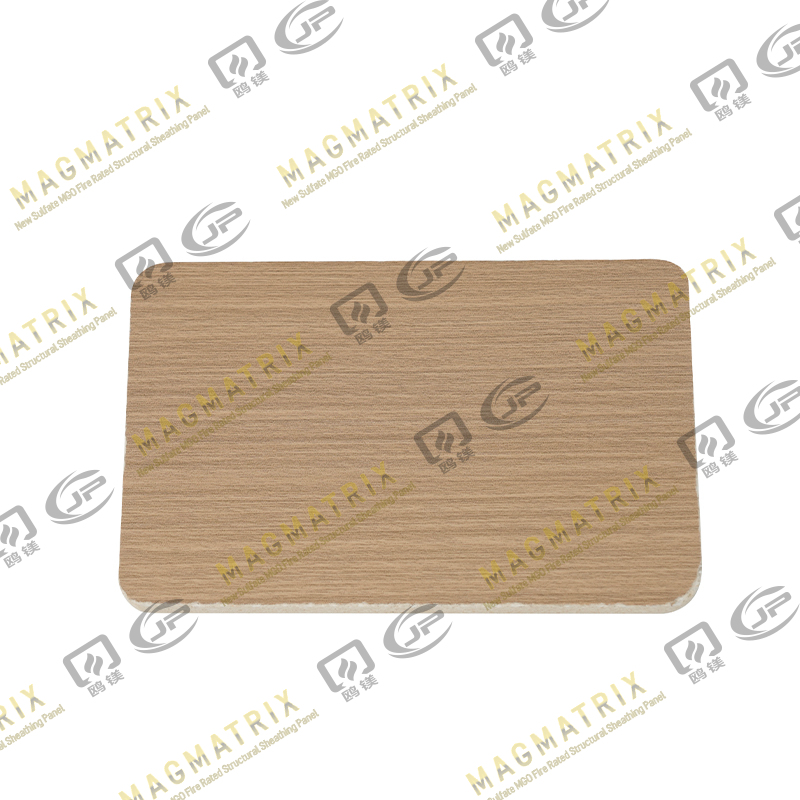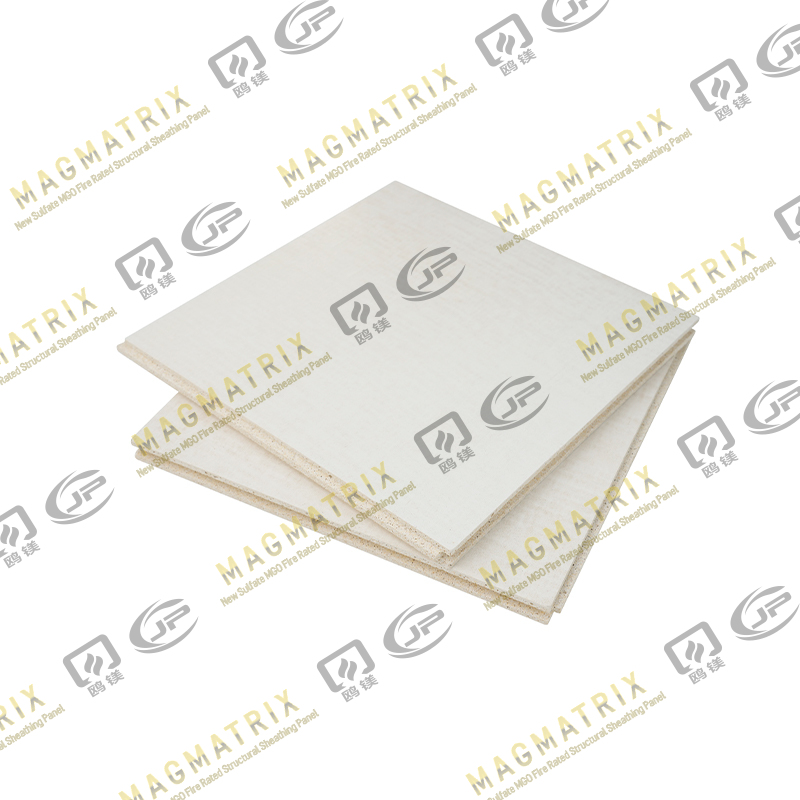
When it comes to building materials, gypsum board (commonly known as drywall) is a staple for interior walls and ceilings due to its affordability and ease of installation. However, in environments where impact resistance, moisture resistance, or superior fire protection are paramount, standard drywall might not always be the optimal choice. Whether you're working on a commercial project, a high-traffic residential area, or a specialized industrial space, exploring alternatives can significantly enhance the longevity, safety, and overall performance of your build.
In 2025, a range of innovative and time-tested materials offer compelling alternatives to traditional gypsum board, providing enhanced durability against impacts, better moisture handling, and often superior fire ratings. This article will guide you through seven prominent impact-resistant options, detailing their features, fire ratings, benefits, drawbacks, and common applications, to help you make an informed decision for your next project.
Key Takeaways
Beyond Drywall: While gypsum board is common, various alternatives offer superior impact resistance, moisture handling, and fire protection for specific building needs.
Diverse Options: Explore materials like fiber cement board, MGO board, cement board, specialized gypsum boards (Type X & C), calcium silicate board, fire-rated plywood, and glass mat panels.
Fire Safety First: Each alternative boasts different fire ratings; understanding these is crucial for meeting building codes and ensuring occupant safety.
Consider Application: The best alternative depends on the specific demands of your project, including expected traffic, moisture exposure, and aesthetic requirements.
Cost vs. Performance: While some alternatives may have a higher upfront cost than standard drywall, their enhanced durability and specialized properties can offer long-term value and reduced maintenance.
2. Fiber Cement Board
Fiber cement board is a composite building material made of cement, sand, cellulose fibers, and water. It's renowned for its exceptional durability and resistance to various environmental factors, making it a robust alternative to traditional gypsum board, particularly in areas demanding high impact and moisture resistance.
2.1 Features
Composition: A blend of cement, sand, and cellulose fibers creates a dense, strong panel.
Durability: Highly resistant to rot, pests, moisture, fire, and impacts. It does not swell or warp when exposed to water.
Versatility: Available in various textures and finishes, mimicking wood grain, stucco, or smooth surfaces. Can be cut and installed like wood.
Stability: Offers excellent dimensional stability, resisting expansion and contraction with temperature changes.
2.2 Fire Rating
Fiber cement board is inherently non-combustible due to its high cement content. It typically achieves a Class A fire rating (or 0 flame spread / 0 smoke developed), which is the highest possible rating for building materials. This means it will not contribute to the spread of flames or smoke in a fire event, making it an excellent choice for fire-resistant assemblies. Specific fire ratings can vary slightly based on thickness and manufacturer, so always check product specifications.
2.3 Pros
Exceptional Durability: Stands up incredibly well to impacts, abrasion, moisture, rot, and insects.
Superior Fire Resistance: Inherently non-combustible with a Class A fire rating.
Moisture and Water Resistant: Ideal for wet areas like bathrooms, kitchens, and exteriors.
Pest Resistant: Impervious to termites and other wood-boring insects.
Low Maintenance: Once installed and finished, it requires minimal upkeep.
Good for Exterior & Interior: Can be used for both exterior siding and interior wall linings in high-traffic or damp areas.
2.4 Cons
Weight: Can be very heavy, requiring more labor and potentially specialized tools for handling and installation.
Installation Difficulty: Cutting requires specialized, dust-producing tools (like a fiber cement saw blade or shears) and proper respiratory protection due to silica dust.
Cost: Generally more expensive per square foot than standard gypsum board.
Brittleness (before installation): Can be brittle before it's securely fastened, making careful handling necessary to prevent breakage.
2.5 Uses
Exterior Siding: A very popular choice for house exteriors due to its weather resistance and durability.
Wet Areas: Excellent for bathroom walls, shower surrounds, and kitchen backsplashes.
High-Traffic Areas: Ideal for commercial corridors, schools, hospitals, and other spaces prone to impacts.
Fire-Rated Assemblies: Used in wall and floor assemblies where a high fire rating is required.
Skirting and Trim: Can be used for durable exterior and interior trim.
Magnesium Oxide board, commonly known as MGO board, is a relatively newer but rapidly gaining popularity building material. It's an innovative mineral-based panel that offers a compelling combination of features, particularly known for its exceptional fire resistance, mold resistance, and environmental friendliness.
3.1 Features
Composition: Primarily made from magnesium oxide, magnesium chloride (or magnesium sulfate), wood fiber, perlite, and a mesh of fiberglass.
Non-Toxic: Free from asbestos, formaldehyde, silica, and other harmful chemicals.
Dimensional Stability: Exhibits excellent stability, resisting expansion and contraction even with significant temperature or humidity fluctuations.
Breathable: Allows moisture vapor to pass through, reducing the risk of condensation and mold growth.
Workability: Can be cut, scored, and snapped much like gypsum board, and can be drilled or fastened with common tools.
3.2 Fire Rating
MGO board is highly regarded for its superior fire resistance. It is inherently non-combustible and typically achieves a Class A fire rating (0 flame spread, 0 smoke developed) in accordance with ASTM E84. Many MGO products can withstand temperatures exceeding 2,000°F (1,093°C) for extended periods without melting, deforming, or releasing smoke or toxic fumes. Its performance in fire is exceptional, often surpassing that of many other building materials.
3.3 Pros
Excellent Fire Resistance: Class A rated, providing a significant safety advantage.
Mold and Mildew Resistant: Naturally inhibits the growth of mold, mildew, and fungi due to its mineral composition and breathability.
Moisture Resistant: While not entirely waterproof like some cement boards, it tolerates moisture exposure well without swelling, delaminating, or degrading.
Impact Resistance: Offers good impact resistance, especially compared to standard drywall.
Environmentally Friendly: Made from naturally occurring minerals, low in embodied energy, and fully recyclable.
Pest Resistant: Inorganic composition means it's not a food source for insects.
Sound Insulation: Provides decent acoustic dampening properties.
3.4 Cons
Cost: Generally more expensive than standard gypsum board and sometimes other alternatives.
Availability: While growing, it may not be as readily available from all suppliers as more traditional materials.
Installation: Can be heavy, and some types require specific fasteners or installation techniques to ensure proper adhesion and long-term performance. Some cheaper versions might have inconsistencies.
Finishing: Can require specific primers and finishes for optimal results, and edges might need special attention.
3.5 Uses
Fire-Rated Assemblies: Ideal for walls, ceilings, and shafts requiring high fire ratings in residential, commercial, and industrial buildings.
Moisture-Prone Areas: Suitable for bathrooms, kitchens, basements, and laundry rooms.
Clean Rooms/Hospitals: Its mold resistance and non-toxic nature make it suitable for environments requiring high hygiene.
Structural Sheathing: Can be used as a structural sheathing material due to its strength and stability.
Exterior Applications: Some specialized MGO boards are designed for exterior cladding, offering weather and fire resistance.
Sound Control: Used where moderate sound insulation is desired.
4. Cement Board
Cement board is a widely recognized and utilized building material, particularly valued for its exceptional water resistance and durability. Composed primarily of cement and reinforcing fibers, it provides a stable and robust substrate for tile and other finishes in environments where moisture is a significant concern.
4.1 Features
Composition: Typically made from Portland cement, silica, and reinforcing fibers (often fiberglass mesh). Some variations include lighter aggregates.
Waterproof/Water-Resistant: Does not degrade, swell, or rot when exposed to water, making it an excellent choice for wet areas.
Stability: Highly dimensionally stable, resisting expansion and contraction due to moisture or temperature fluctuations.
Rigidity: Provides a very stiff and stable surface, ideal for tiling.
Texture: Generally has a rough, porous surface designed for strong adhesion with thin-set mortar.
4.2 Fire Rating
Cement board is inherently non-combustible due to its mineral composition. It typically achieves a Class A fire rating (0 flame spread / 0 smoke developed), similar to fiber cement and MGO boards. This means it will not contribute to the spread of fire. While primarily chosen for its water resistance, its non-combustible nature adds a significant safety benefit in fire-rated assemblies, especially when used in conjunction with other fire-resistant materials.
4.3 Pros
Excellent Water Resistance: Unparalleled performance in wet and humid environments, preventing mold and mildew growth.
High Durability: Very strong and resistant to impacts, punctures, and rot.
Ideal Tiling Substrate: Provides a rigid and stable base that prevents tile and grout from cracking due to movement.
Non-Combustible: Class A fire rating makes it a safe choice in fire-prone areas.
Pest Resistant: Inorganic composition means it's impervious to insect damage.
Long-Lasting: Extremely durable and will not deteriorate over time in wet conditions.
4.4 Cons
Weight: Can be very heavy and cumbersome to work with, especially larger sheets, requiring more effort for handling and installation.
Installation Difficulty: Cutting typically requires a carbide-tipped scoring tool and snapping, or a specialized fiber cement saw blade, which can create significant dust. Fastening requires specialized corrosion-resistant screws.
Cost: More expensive than standard gypsum board.
No Structural Value: Does not contribute to the structural integrity of a wall or floor assembly.
Finishing: Its rough surface is designed for tile adhesion and is not suitable for painting or direct finishing without significant skim coating, which defeats its primary purpose.
4.5 Uses
Shower Walls and Floors: The most common application, providing a waterproof substrate for ceramic, porcelain, or stone tiles.
Bathroom and Kitchen Floors: Used as an underlayment for tile in high-moisture areas.
Kitchen Backsplashes and Countertops: Provides a durable, water-resistant base.
Exterior Applications (Limited): Some types can be used for exterior sheathing behind stucco or stone veneer where moisture resistance is critical.
Behind Stoves and Fireplaces: Due to its non-combustible nature, it can provide a heat-resistant barrier.
High-Moisture Commercial Kitchens and Laundries: Ideal for commercial settings where frequent cleaning and high humidity are present.
5. Type X & Type C Fire Resistant Gypsum Board
While standard gypsum board is often considered the baseline, specialized versions like Type X and Type C fire-resistant gypsum board represent enhanced iterations designed to significantly improve fire protection and, to some extent, impact resistance over conventional drywall. These boards are still gypsum-based but incorporate additives and structural modifications to perform better under fire conditions.
5.1 Features
Type X Gypsum Board:
Composition: Similar to standard gypsum board, but includes special non-combustible fibers (typically glass fibers) within the gypsum core.
Core Density: Generally denser and harder than regular drywall, contributing to improved impact resistance.
Mechanism: The embedded glass fibers help hold the gypsum core together longer when exposed to fire, maintaining the integrity of the wall assembly. The gypsum core still releases water molecules as steam (calcination) to slow fire spread.
Type C Gypsum Board:
Composition: Contains even more glass fibers and other proprietary additives (like vermiculite) compared to Type X.
Enhanced Performance: Designed to offer superior fire resistance to Type X, especially in thinner panels or where higher fire ratings are required.
Calcination Control: The additives help to control the rate of calcination, allowing the board to maintain its structural integrity for longer under fire.
5.2 Fire Rating
Both Type X and Type C gypsum boards are specifically manufactured to meet higher fire resistance ratings than standard drywall.
Type X: Typically provides a 1-hour fire rating when used in a single layer on each side of a wall assembly (e.g., in a 5/8-inch thickness). It's a fundamental component in many fire-rated wall, ceiling, and shaft systems.
Type C: Offers even greater fire resistance for its thickness than Type X. It can achieve 1-hour ratings in thinner applications (e.g., 1/2-inch) or contribute to 2-hour or even 3-4 hour fire-rated assemblies when used in multiple layers or specific configurations. Its enhanced performance allows for more compact fire-rated designs.
It's crucial to note that the actual fire rating of an assembly depends on the entire system (studs, insulation, fasteners, number of layers), not just the board itself. Always refer to UL-listed or approved fire-rated assembly designs.
5.3 Pros
Improved Fire Resistance: Significantly better fire performance than standard drywall, crucial for meeting building codes.
Familiar Installation: Installed using essentially the same tools and techniques as standard drywall, making it familiar to most contractors.
Cost-Effective Fire Protection: More affordable than many other non-combustible alternatives for achieving specific fire ratings.
Good Sound Attenuation: The increased density contributes to better sound insulation compared to standard drywall.
Modest Impact Resistance (Type X/C vs. Standard): While not as impact-resistant as cement board or fiber cement, the denser core of Type X and Type C offers a slight improvement over standard drywall.
5.4 Cons
Still Gypsum-Based: While improved, they are still susceptible to water damage if continuously exposed to moisture, leading to deterioration and mold growth (unlike cement or MGO boards).
Limited Impact Resistance (vs. Alternatives): While better than standard drywall, their impact resistance is still considerably lower than fiber cement, MGO, or cement board.
Weight: Can be heavier than standard drywall, requiring more effort to handle and install.
Dust During Installation: Cutting and sanding still produce gypsum dust, requiring proper respiratory protection.
5.5 Uses
Fire-Rated Walls and Ceilings: Essential for interior partitions, shaft walls, and ceilings in residential and commercial buildings where fire separation is required.
Corridors and Stairwells: Commonly used in egress routes to provide a fire-rated enclosure.
Multi-Family Dwellings: Critical for fire-rated demising walls between units.
Commercial Buildings: Integral to fire-resistive construction in offices, retail, and industrial facilities.
Areas Requiring Enhanced Fire Safety: Anywhere building codes or occupant safety concerns dictate higher fire performance than standard drywall can offer.
6. Calcium Silicate Board
Calcium Silicate board is a rigid, inorganic board material primarily composed of calcium silicates, often reinforced with fibers. It's highly regarded for its exceptional fire resistance, thermal insulation properties, and dimensional stability, making it a robust alternative where extreme conditions or stringent safety requirements are present.
6.1 Features
Composition: Manufactured from a mixture of calcium oxide, silica, and reinforcing fibers (historically asbestos, but now exclusively asbestos-free, typically cellulose or glass fibers), cured under high pressure and steam (autoclaved).
High Temperature Resistance: Known for its ability to withstand very high temperatures without degrading, shrinking, or deforming.
Dimensional Stability: Extremely stable even under varying temperature and humidity conditions.
Moisture Resistance: While not entirely waterproof, it exhibits good resistance to moisture and will not rot, swell, or delaminate in damp environments, though prolonged saturation should be avoided.
Workability: Can be cut and fastened with standard tools, although some high-density versions may require more robust equipment.
6.2 Fire Rating
Calcium silicate board is a premium fire-resistant material. It is inherently non-combustible and typically achieves a Class A1 fire rating (the highest possible European classification, equivalent to Class A in North America, indicating zero flame spread and zero smoke developed). Many calcium silicate boards can endure temperatures up to 1800°F (982°C) or even higher, providing extended fire protection (e.g., 2 to 4 hours or more) when incorporated into approved fire-rated assemblies. Its ability to maintain structural integrity under extreme heat makes it a top choice for critical fire barriers.
6.3 Pros
Exceptional Fire Resistance: Superior non-combustibility and ability to withstand high temperatures, providing excellent passive fire protection.
High Thermal Insulation: Offers good insulating properties, which can help with energy efficiency.
Moisture and Mold Resistant: Does not support mold growth and handles moisture well without structural degradation.
High Strength and Durability: Provides good impact resistance and is less prone to cracking or breaking compared to standard drywall.
Pest Resistant: Inorganic nature means it is not a food source for termites or other pests.
Sound Insulation: Contributes to effective acoustic dampening.
6.4 Cons
Cost: Generally one of the more expensive alternatives to gypsum board.
Weight: Can be quite heavy, necessitating more labor and potentially specialized lifting equipment for larger sheets.
Dust during Cutting: Generates silica dust when cut, requiring proper respiratory protection and ventilation.
Surface Finish: While some types can be painted, the surface may be less smooth than gypsum board and might require more preparation for a high-quality finish.
Brittleness (before installation): Can be somewhat brittle before securely fastened, requiring careful handling.
6.5 Uses
High-Performance Fire Barriers: Used extensively in critical fire-rated walls, ceilings, ducts, and shafts in commercial, industrial, and high-rise residential buildings.
Furnace Linings and Industrial Insulation: Its high-temperature resistance makes it ideal for insulating industrial ovens, kilns, and other high-heat equipment.
Fireplace Surrounds: Provides a safe, non-combustible surface around fireplaces and stoves.
Wet Areas (Commercial): While cement board is more common for residential wet areas, calcium silicate board is used in commercial wet areas where fire rating is also a concern.
Acoustic Panels: Can be integrated into sound-insulating assemblies.
Exterior Cladding (Specialized Types): Certain formulations are designed for robust exterior applications requiring fire and weather resistance.
7. Fire-Rated Plywood
Fire-rated plywood, often referred to as fire-retardant treated wood (FRTW) plywood, is a specialized wood product that undergoes a pressure impregnation process with fire-retardant chemicals. This treatment significantly reduces the wood's flammability, charring rate, and smoke development, allowing it to meet stringent fire safety standards while retaining the inherent advantages of plywood.
7.1 Features
Composition: Standard plywood (layers of wood veneer bonded with adhesives) treated under pressure with fire-retardant chemicals. These chemicals react with fire to produce non-combustible gases and char, rather than ignite.
Structural Integrity: Retains the structural strength and workability of traditional plywood.
Versatility: Available in various grades and thicknesses, suitable for a wide range of structural and non-structural applications.
Appearance: Generally similar to untreated plywood, though the treatment process can sometimes alter the color slightly.
Non-Hygroscopic: The treatment usually does not significantly increase the wood's hygroscopic properties (its tendency to absorb moisture from the air).
7.2 Fire Rating
Fire-rated plywood is designed to achieve specific fire performance ratings, typically meeting Class A or Class B flame spread ratings (ASTM E84 / UL 723). The treatment significantly slows the rate at which flames spread across the surface and reduces smoke generation.
It can also contribute to 1-hour or 2-hour fire-rated assemblies when used as sheathing in walls, floors, or roof decks, as part of a UL-listed or code-approved design. The chemicals cause the wood to form a char layer when exposed to heat, which acts as an insulative barrier, protecting the underlying wood and maintaining structural integrity for a longer period than untreated wood.
It's crucial to specify interior or exterior grade FRTW based on the application, as exterior grades are designed to withstand weather exposure without leaching chemicals.
7.3 Pros
Improved Fire Performance: Drastically reduces flammability, flame spread, and smoke development compared to untreated plywood.
Structural Material: Unlike many board alternatives, FRTW plywood provides structural integrity, serving as both a sheathing material and a fire-rated barrier.
Workability: Easy to cut, fasten, and install using standard woodworking tools and techniques.
Code Compliance: Essential for meeting fire codes in specific structural applications where wood is desired or required.
Predictable Performance: Treated to consistently meet fire performance standards.
7.4 Cons
Cost: Significantly more expensive than untreated plywood and standard gypsum board.
Moisture Sensitivity (Interior Grades): Interior grade FRTW can have its fire-retardant properties compromised if exposed to excessive moisture or leaching. Exterior grades are designed for outdoor use.
Potential for Brittleness/Strength Reduction: In some older or poorly applied treatments, or in very high heat applications, the treatment can potentially lead to some reduction in strength or increased brittleness over time. Modern treatments are much more stable.
Limited Availability: May not be as readily available as standard plywood from all suppliers and might require special ordering.
Not Non-Combustible: While fire-resistant, it is still a wood product and not inherently non-combustible like cement, MGO, or calcium silicate boards. It chars rather than burns freely.
7.5 Uses
Roof Decking: Commonly used in commercial and multi-family construction as fire-rated roof sheathing.
Wall Sheathing: Provides fire-rated sheathing for exterior and interior walls, particularly in framed construction.
Subflooring: Used as a fire-rated subfloor in multi-story buildings.
Attics and Crawl Spaces: Where fire separation or flame spread control is required.
Commercial Building Components: Used for various structural and non-structural components in buildings where fire safety is paramount.
Stair Stringers and Blocking: Applications where traditional wood is used but enhanced fire resistance is needed.
8. Glass Mat Panels
Glass mat panels, often referred to as glass mat gypsum panels or glass-faced drywall, are an evolution of traditional gypsum board. Instead of paper facers, these panels feature fiberglass mats embedded into the gypsum core, front and back. This design significantly enhances their resistance to moisture, mold, and often provides better durability and impact resistance compared to standard paper-faced drywall.
8.1 Features
Composition: A gypsum core (similar to regular drywall) but with fiberglass mats laminated to both faces and sometimes along the edges. Some versions may also incorporate water-resistant additives in the core.
Moisture and Mold Resistance: The fiberglass matting prevents water absorption by the paper, which is the primary food source for mold in traditional drywall. This makes them highly resistant to mold and mildew growth.
Impact Resistance: While not as robust as cement or fiber cement boards, the glass mat facer provides a tougher, more impact-resistant surface than paper-faced gypsum board.
Dimensional Stability: Maintains stability even in humid conditions, reducing the risk of warping or sagging.
Workability: Generally installed using similar tools and techniques to standard gypsum board, though specific cutting methods or joint compounds might be recommended by manufacturers.
8.2 Fire Rating
Many glass mat panels are designed to offer enhanced fire resistance, often meeting Type X or Type C specifications, depending on their core composition and thickness. They are typically non-combustible in their core, and the glass mat facers do not contribute to flame spread.
Similar to Type X and C gypsum boards, these panels can contribute to 1-hour, 2-hour, or higher fire-rated assemblies when used in appropriate thicknesses and configurations. The fiberglass mat helps to maintain the integrity of the gypsum core under fire exposure, preventing premature collapse and slowing the spread of flames and smoke. Always verify the specific product's fire rating and approved assembly details.
8.3 Pros
Superior Moisture and Mold Resistance: Excellent for wet or humid environments, significantly reducing the risk of mold and mildew compared to standard drywall.
Improved Impact Resistance: Tougher surface resists scuffs, abrasions, and minor impacts better than paper-faced drywall.
Fire Resistance: Many types are fire-rated (Type X or C equivalent), contributing to fire-rated assemblies.
Familiar Installation: Installed with methods similar to standard drywall, easing the learning curve for installers.
Versatile Finishing: Can be painted, textured, or tiled over, similar to regular drywall, using appropriate primers.
Durability: Longer lifespan in moisture-prone areas where traditional drywall would quickly deteriorate.
8.4 Cons
Cost: More expensive than standard gypsum board.
Dust During Cutting: Cutting can produce fine fiberglass dust, requiring good ventilation and personal protective equipment (gloves, long sleeves, eye protection, respirator) to avoid skin irritation and inhalation.
Surface Preparation: While paintable, the surface texture of the glass mat can be slightly different from paper, potentially requiring specific primers or slightly more effort for a perfectly smooth finish.
Not Fully Waterproof: While highly resistant to moisture and mold, they are not impervious to continuous water immersion or direct outdoor exposure (unless specifically designed exterior sheathing).
8.5 Uses
Bathrooms, Kitchens, and Laundry Rooms: Ideal for walls and ceilings in residential and commercial wet areas.
Basements: Excellent for finishing basement walls where humidity or occasional moisture might be a concern.
High-Traffic Areas: Good for corridors, entryways, and commercial spaces where scuffs and minor impacts are common.
Exterior Soffits and Ceilings: Specialized exterior glass mat panels are used for covered outdoor areas like soffits and exterior ceilings due to their moisture and weather resistance.
Fire-Rated Assemblies: Utilized in wall and ceiling systems requiring specific fire resistance ratings.
Hospitality and Healthcare Facilities: Where hygiene, mold resistance, and durability are critical.
9. Modern Stucco
Modern stucco refers to a versatile wall cladding system, typically applied in layers over a lath and substrate. While traditionally a cement-based mix, contemporary stucco systems, especially those designed for enhanced performance, incorporate various additives, synthetic components, or even rely on a specific application over cement board or other robust substrates. When properly applied, stucco provides a highly durable, impact-resistant, and fire-resistant surface.
9.1 Features
Composition: Traditional stucco is a mix of Portland cement, sand, lime, and water. Modern variations often include acrylic or polymer additives (known as Exterior Insulation and Finish Systems - EIFS, or polymer-modified stucco) that enhance flexibility, crack resistance, and adhesion. It's applied over a lath (metal or fiberglass mesh) and a suitable substrate (e.g., sheathing, cement board).
Layered Application: Applied in multiple coats (scratch coat, brown coat, finish coat) to build up thickness and strength.
Seamless Finish: Creates a monolithic, hard, and seamless surface once cured.
Textural Versatility: Can be finished in a wide variety of textures and colors, from smooth to highly textured, providing aesthetic flexibility.
Breathability: Traditional stucco is breathable, allowing moisture vapor to escape, which can be beneficial for wall health. Polymer-modified systems vary.
9.2 Fire Rating
Traditional cement-based stucco is inherently non-combustible. When applied over non-combustible substrates (like concrete masonry units or cement board) or as part of a properly designed assembly over wood framing, it provides excellent fire resistance. Stucco assemblies can achieve Class A fire ratings for flame spread and contribute significantly to the fire resistance ratings of wall assemblies (e.g., 1-hour, 2-hour, or more).
The thick, mineral-based layers of stucco act as a substantial thermal barrier, slowing heat transfer and preventing flame spread. Even modern polymer-modified stuccos, when properly formulated and applied over appropriate substrates, are designed to meet stringent fire codes and can offer excellent fire performance, especially when they form a non-combustible exterior layer. Always verify the fire rating for the specific stucco system and assembly being considered.
9.3 Pros
Exceptional Impact Resistance: Once cured, stucco forms a very hard, rigid surface highly resistant to impacts, punctures, and abrasion, making it ideal for high-traffic or exposed areas.
High Fire Resistance: Inherently non-combustible (traditional) or highly fire-resistant (modern systems), contributing significantly to passive fire protection.
Moisture and Weather Resistant: Excellent for exterior applications, providing a durable barrier against rain and moisture.
Durable and Long-Lasting: With proper installation and maintenance, stucco surfaces can last for decades.
Aesthetically Versatile: Wide range of finishes and colors allow for significant design flexibility.
Pest Resistant: The hard, inorganic surface is not a food source for insects.
9.4 Cons
Installation Complexity & Time: Requires skilled labor and a multi-step, layered application process that can be time-consuming and weather-dependent.
Weight: Can add significant weight to a structure, requiring appropriate framing and foundations.
Cracking Potential: While modern additives reduce it, traditional stucco can be prone to cracking due to structural movement, drying shrinkage, or improper application.
Cost: Generally more expensive than standard drywall and some other alternatives due to labor intensity and material costs.
Repair Difficulty: While durable, repairs can be challenging to blend seamlessly with existing finishes.
Not a DIY Project: Typically requires professional installation to ensure proper performance and longevity.
9.5 Uses
Exterior Wall Cladding: Most common use for residential and commercial buildings, providing a durable and aesthetic finish.
High-Impact Interior Areas: In specialized commercial or industrial settings where interior walls need extreme impact resistance (e.g., loading docks, garages, utility rooms).
Fire-Rated Exterior Assemblies: Essential component in exterior wall systems requiring high fire resistance.
Sound Control: The dense mass of stucco can contribute to sound attenuation.
Architectural Features: Used to create decorative elements and achieve specific architectural styles.
Base for Specialty Finishes: Can serve as a robust substrate for further decorative or protective coatings.
10. Comparison Table
Choosing the right impact-resistant gypsum board alternative in 2025 involves weighing various factors beyond just the initial material cost. The following table provides a quick comparative overview of the options discussed, considering their fire ratings, general cost, durability, installation characteristics, and aesthetic potential.
| Feature |
Fiber Cement Board |
MGO Board |
Cement Board |
Type X & C Gypsum Board |
Calcium Silicate Board |
Fire-Rated Plywood |
Glass Mat Panels |
Modern Stucco |
| Fire Rating |
Class A (non-combustible) |
Class A (non-combustible, excellent) |
Class A (non-combustible) |
Type X: 1-hr; Type C: 1-hr+ (in assemblies) |
Class A1 (non-combustible, superior) |
Class A or B flame spread (in assemblies) |
Class A, often Type X or C equivalent |
Class A (non-combustible in assemblies) |
| Cost (vs. Std Drywall) |
Medium to High |
Medium to High |
Medium |
Low to Medium |
High to Very High |
Medium to High |
Medium |
High (due to labor) |
| Durability |
Excellent (impact, moisture, rot, pests) |
Excellent (impact, mold, moisture, pests) |
Superior (water, impact, tile substrate) |
Fair (improved impact vs. std, but not robust) |
Excellent (high temp, impact, moisture) |
Good (structural, fire resistance) |
Good (moisture, mold, minor impact) |
Excellent (impact, weather) |
| Installation |
Heavy, specialized tools, dust |
Heavy (but workable), some specific fasteners |
Very heavy, specialized tools, dust |
Familiar tools, heavier, dust |
Heavy, dust, requires careful handling |
Familiar wood tools, some weight |
Familiar tools, some fiberglass dust |
Complex, multi-layer, skilled labor |
| Aesthetics |
Varied textures, paintable, requires finishing |
Smooth, paintable, requires finishing |
Rough, primarily for tiling, not for direct finish |
Smooth, paintable, tape/mud joints |
Smooth to slightly textured, paintable |
Wood grain, typically covered (paint, finish) |
Smooth, paintable, tape/mud joints |
Varied textures, wide color range |
10.1 Fire Ratings
As seen, most alternatives offer a Class A fire rating, indicating non-combustibility and minimal flame spread. Type X and Type C gypsum boards, along with Fire-Rated Plywood, contribute to specific hourly fire-rated assemblies, making them essential for code compliance in fire-separation areas. Calcium Silicate and MGO boards often stand out for their exceptional performance under extreme heat.
10.2 Cost
The upfront cost for most impact-resistant alternatives is higher than standard gypsum board. This is often offset by their enhanced durability, reduced maintenance needs, and specific performance benefits (like superior fire or moisture resistance), offering better long-term value in appropriate applications. Stucco's high cost is largely driven by the intensive labor involved.
10.3 Durability
For ultimate impact and moisture resistance, Fiber Cement, Cement Board, and Modern Stucco are top contenders. MGO and Calcium Silicate boards also offer excellent all-around durability, including mold and fire resistance. Glass Mat Panels provide a good step up from standard drywall in moisture and minor impact resilience, while Fire-Rated Plywood offers structural durability alongside its fire benefits.
10.4 Installation
Materials like Fiber Cement and Cement Board, and Stucco, are more challenging and labor-intensive to install due to their weight, density, and specialized tooling or application methods. Type X/C Gypsum Board and Glass Mat Panels maintain a closer resemblance to standard drywall installation, while Fire-Rated Plywood utilizes common carpentry tools. Proper dust control and personal protective equipment are crucial for many of these materials.
10.5 Aesthetics
Most board products (Fiber Cement, MGO, Type X/C, Glass Mat, Calcium Silicate) can be finished to achieve a smooth, paintable surface similar to drywall, though some may require more specific primers or preparation. Cement board is primarily a substrate for tile, and Fire-Rated Plywood is usually covered. Modern Stucco, conversely, offers its own distinct range of textures and colors as a finished surface.
11. FAQ
Here are answers to some of the most frequently asked questions when considering impact-resistant gypsum board alternatives for your building projects in 2025.
11.1 What is the best fire resistant gypsum board alternative for wet areas?
For truly wet areas like shower enclosures, Cement Board is generally considered the best alternative due to its superior water resistance, preventing rot, swelling, and mold growth. MGO Board and Glass Mat Panels also offer excellent moisture and mold resistance, making them strong contenders for high-humidity environments like bathrooms and basements, often with good fire ratings as well.
11.2 How often do you need to reapply fire retardant to fire-rated plywood?
For factory-treated fire-rated plywood (FRTW), the fire retardant chemicals are typically pressure-impregnated deep into the wood during manufacturing. For interior applications not exposed to weather, this treatment is generally considered permanent for the lifespan of the building material itself, and reapplication is not necessary. For exterior-grade FRTW, which is designed to resist leaching, the treatment is also long-lasting. However, if using a topical fire retardant spray on untreated plywood, the effectiveness can diminish over time (1-5 years depending on the product and exposure) and may require reapplication according to the manufacturer's instructions. Always consult the product manufacturer's specifications for their specific guidance.
11.3 Can you paint or finish these fire resistant boards?
Yes, most of these fire-resistant boards can be painted or finished, though the preparation may vary:
Fiber Cement Board, MGO Board, Type X & C Gypsum Board, Glass Mat Panels, and Calcium Silicate Board can typically be painted, skim-coated, or textured much like standard drywall, often after priming. Their surface may require specific primers or different finishing techniques depending on the desired smoothness.
Cement Board has a rough, porous surface designed for excellent adhesion with thin-set mortar and is primarily intended as a substrate for tile, not for direct painting.
Fire-Rated Plywood can be painted or stained, similar to regular plywood, but is often used in concealed structural applications.
Modern Stucco is designed as a finished surface itself and can be tinted, painted, or textured in various ways.
11.4 Are these alternatives more expensive than regular drywall?
Generally, yes, these impact-resistant and fire-resistant alternatives are more expensive per square foot than standard gypsum board. The increased cost is due to their specialized compositions, manufacturing processes, and enhanced performance characteristics. However, when evaluating cost, it's important to consider the total cost of ownership. Their superior durability, impact resistance, and fire/moisture protection can lead to significant long-term savings by reducing maintenance, repairs, and replacement needs, especially in demanding environments.
11.5 Do you need special tools to install these boards?
The need for special tools varies by material:
Type X & C Gypsum Board and Glass Mat Panels can often be cut and fastened with standard drywall tools, though their increased density may wear blades faster, and glass mat can cause skin irritation requiring gloves and long sleeves.
Fiber Cement Board and Cement Board typically require specialized carbide-tipped scoring tools, fiber cement saw blades, or shears for cutting, which can generate significant dust. Specialized fasteners (e.g., corrosion-resistant screws for wet areas) may also be necessary.
MGO Board and Calcium Silicate Board can usually be scored and snapped or cut with a saw, but heavy-duty blades are often recommended, and dust precautions are essential.
Fire-Rated Plywood uses standard woodworking tools.
Modern Stucco requires specialized tools and expertise for mixing, applying, and finishing its various layers.
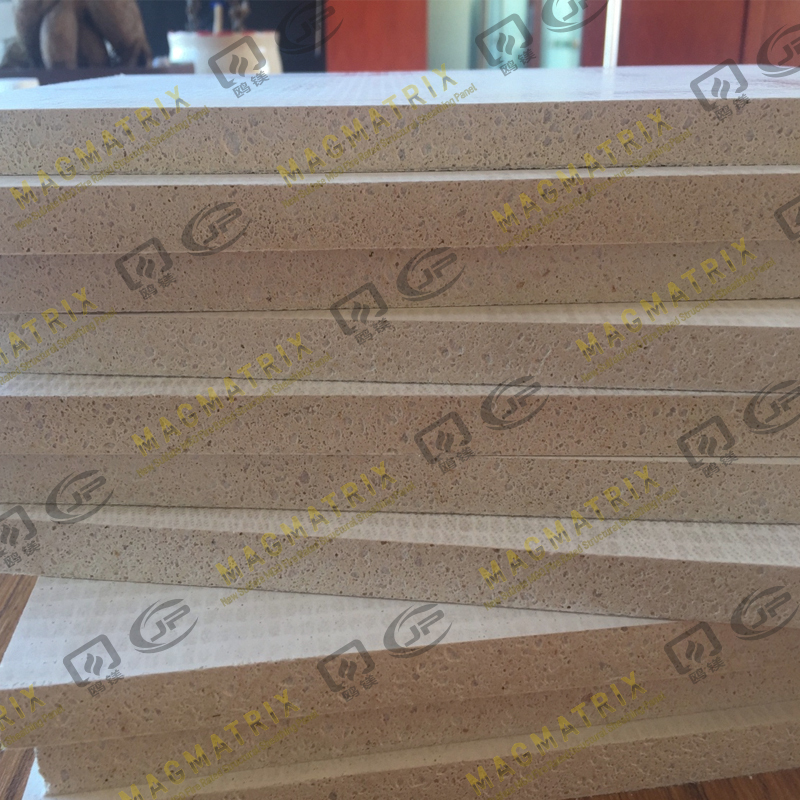 BMSC 517 New Sulfate MgO Board
BMSC 517 New Sulfate MgO Board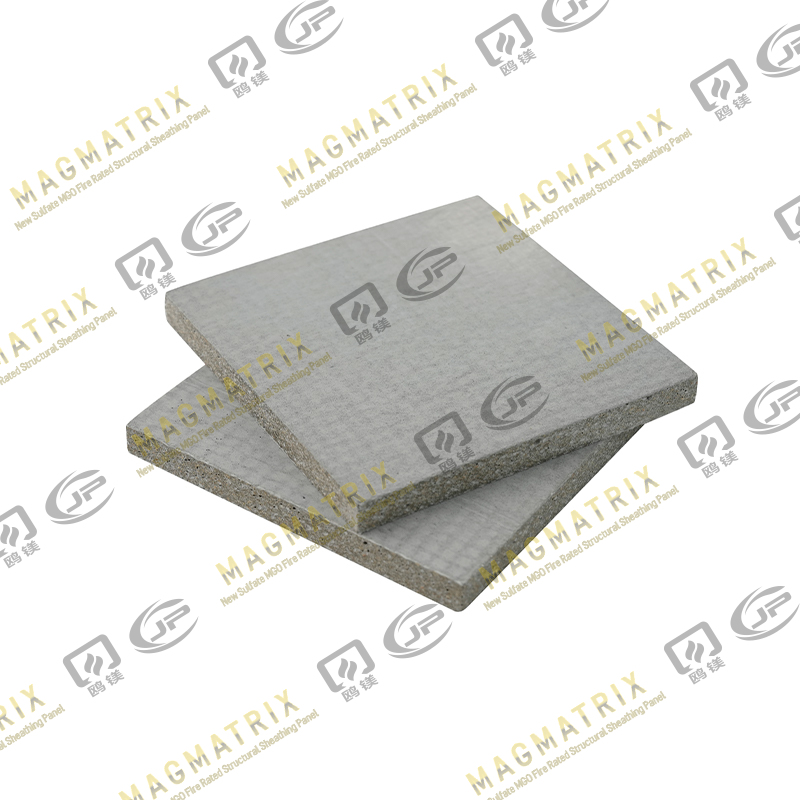 Multi-Support MgO Wall Sheathing Board
Multi-Support MgO Wall Sheathing Board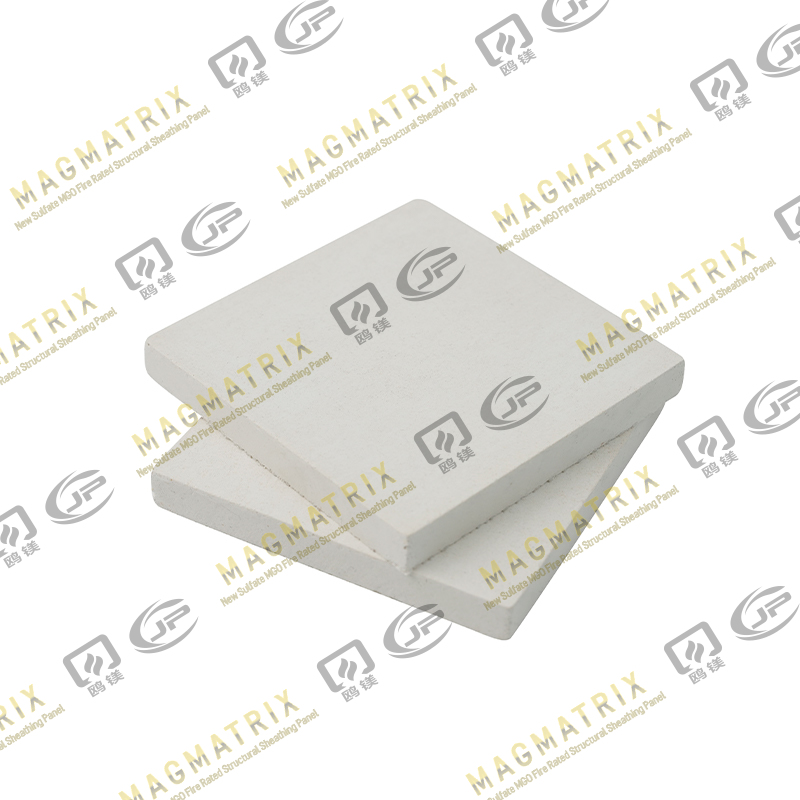 Perseverance MgO Wall Sheathing Board
Perseverance MgO Wall Sheathing Board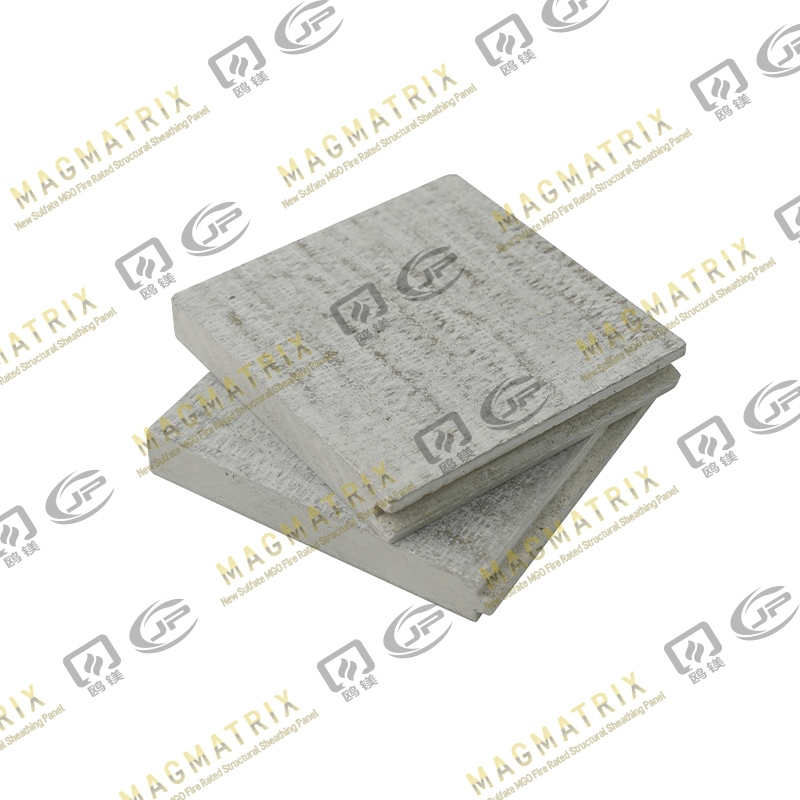 Multi-Support MgO Subfloor Sheathing Board
Multi-Support MgO Subfloor Sheathing Board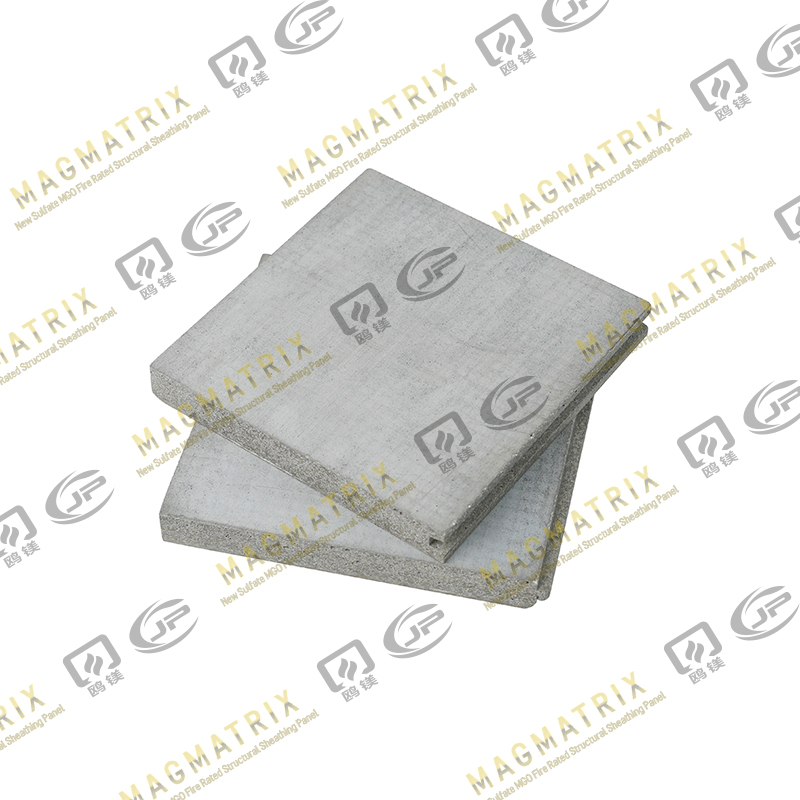 Perseverance MgO Subfloor Sheathing Board
Perseverance MgO Subfloor Sheathing Board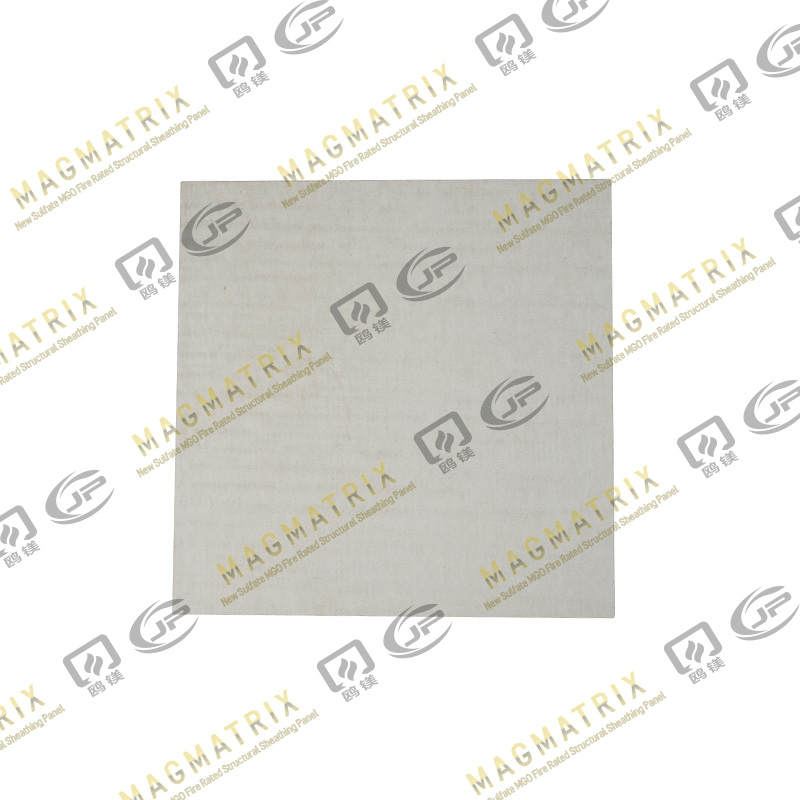 MagMatrix MgO Underlayment Panel/board
MagMatrix MgO Underlayment Panel/board


 English
English русский
русский Español
Español
